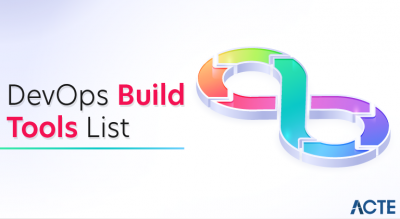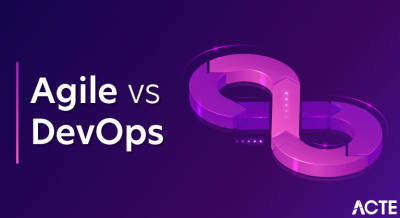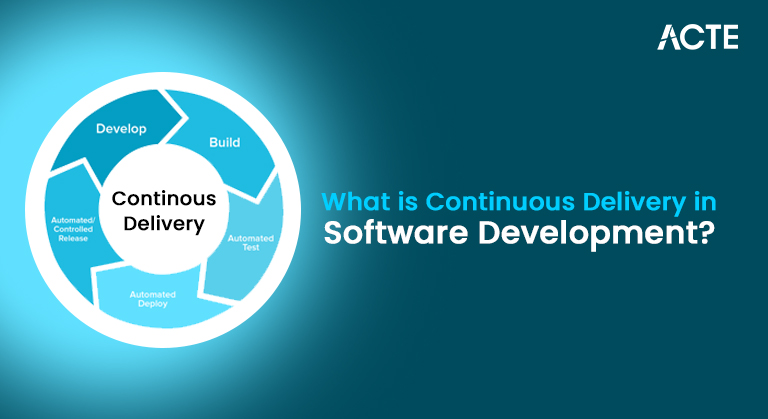
- Introduction to Continuous Delivery
- Difference Between Continuous Delivery and Continuous Deployment
- Key Principles of Continuous Delivery
- Benefits of Continuous Delivery in DevOps
- Continuous Delivery Pipeline: Stages and Process
- Tools for Implementing Continuous Delivery
- Challenges in Implementing Continuous Delivery
- Role of Automation in Continuous Delivery
- Best Practices for Continuous Delivery
- Security Considerations in Continuous Delivery
- Case Studies of Continuous Delivery Implementation
- Conclusion
Introduction to Continuous Delivery
One of the most significant changes in software development in recent years has been the shift toward agile methodologies. Traditional Continuous Delivery in Software Development approaches, which required months or even years of growth before releasing products to customers, have gradually led to a more iterative and continuous process. This shift is fueled by the need for faster delivery cycles, improved software quality, and better collaboration across development and operations teams. One of the most vital concepts that have emerged in this landscape is Continuous Delivery (CD). Continuous Delivery is a software development practice, commonly taught in DevOps Training, in which code changes are automatically prepared for a release to production. The goal of Continuous Delivery is to ensure that software can be reliably released at any time while maintaining high quality and reducing risk. It is a step beyond Continuous Integration (CI), which focuses on automatically building and testing the code. In Continuous Delivery, the focus shifts to automating the entire release process, ensuring that code is always in a deployable state. This approach to software delivery is an integral part of DevOps, which emphasizes collaboration between development and operations teams. Continuous Delivery helps align these teams toward a shared goal: fast, frequent, and safe software releases.
To Earn Your DevOps Certification, Gain Insights From Leading DevOps Experts And Advance Your Career With ACTE’s DevOps Online Course Today!
Difference Between Continuous Delivery and Continuous Deployment
While Continuous Delivery and Continuous Deployment are closely related practices in the DevOps pipeline, they differ in terms of automation and control over the deployment process. Continuous Delivery refers to the practice of ensuring that software is always in a deployable state. In this approach, every change to the codebase is automatically built, tested, and validated through a series of automated steps. However, the final deployment to the production environment is not automatic; it is typically triggered manually by an authorized user, such as a developer or operations team member. This allows teams to control when a release goes live, while still benefiting from fast and reliable delivery pipelines.
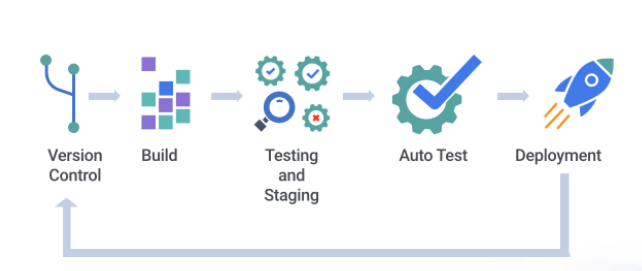
On the other hand, Continuous Deployment takes automation a step further by removing the need for manual approval. In this model, once a change passes all automated tests and checks, it is immediately and automatically deployed to production. This requires a robust and well-maintained testing infrastructure to ensure that only stable and error-free code reaches the live environment. In essence, Continuous Delivery prepares code for deployment at any time, while Continuous Deployment pushes every validated change live automatically, enabling rapid and seamless software delivery.
Key Principles of Continuous Delivery
- Automated Testing: Testing is the backbone of Continuous Delivery. All code changes must pass a series of computerized tests before they are deemed ready for deployment. This includes unit, integration, and UI tests, ensuring that code changes do not break the application.
- Frequent Releases: Continuous Delivery aims to release software frequently, with small incremental changes. This reduces the complexity of deployments and minimizes the risk of issues occurring in production a core principle when understanding What is AWS DevOps.
- Version Control: All code, configuration, and documentation must be stored in version control systems like Git. This ensures developers can easily track changes, roll back to previous versions, and collaborate efficiently.
- Automated Deployment: Deployment processes should be fully automated, ensuring that deployments are repeatable, reliable, and consistent. Automation reduces human error and ensures that deployment steps are executed precisely the same every time.
- Fast Feedback Loop: Continuous Delivery relies on rapid feedback from automated tests and deployment processes to catch issues early. A quick feedback loop helps developers fix problems quickly, improving the quality of the software.
- Infrastructure as Code (IaC): Infrastructure should be treated like application code, meaning it is defined and managed through code. This enables environments to be reproduced quickly and ensures consistency across all stages of the pipeline.
Benefits of Continuous Delivery in DevOps
- Faster Time to Market: With Continuous Delivery, the software can be deployed anytime, reducing the time it takes to deliver new features, fixes, and user improvements. This speeds up the overall development lifecycle and helps businesses stay competitive.
- Improved Software Quality: Automated testing and frequent releases help identify issues early in development, reducing the risk of bugs and defects reaching production. This results in higher-quality software.
- Reduced Deployment Risk: By releasing small, incremental changes instead of significant, monolithic updates, the risks associated with deployments are minimized a strategy also supported by several Docker Alternatives and Their Standout Features. This makes detecting and fixing issues quickly easier without affecting the entire application.
- Increased Collaboration: Continuous Delivery fosters collaboration between development, testing, and operations teams. Since all teams are involved in the automated pipeline, communication and coordination improve, improving overall software delivery.
- Scalability: Automation and standardized processes make scaling the development and deployment pipelines easier. Continuous Delivery enables organizations to handle increased demand and deliver software faster without sacrificing quality.
- Code Commit: Developers commit their code to a shared version control system like Git. Once engaged, the code is automatically pulled by the CI/CD pipeline.
- Build: The committed code is automatically built into a deployable artifact. This can be a compiled application, a container image, or any other deployable format. This stage may also include static code analysis and quality checks.
- Automated Tests: The build is tested using automated test suites. This includes unit tests, integration tests, and functional tests. The goal is to ensure that the code works as expected and that it doesn’t introduce regressions.
- Staging Deployment: Once the code passes automated tests, it is deployed to a staging environment that mirrors production as closely as possible. This allows teams to test the application in a production-like environment before it goes live.
- Manual Approval (Optional): Some organizations may include a manual approval step before deployment to production. This allows a team member (often from operations or quality assurance) to review the changes and confirm they are ready for production.
- Production Deployment: The code is deployed to the production environment if everything passes. With Continuous Delivery, this step is often automated but can be triggered manually if necessary.
- Monitoring and Feedback: Once in production, the application is continuously monitored for performance issues, bugs, or other anomalies a critical practice emphasized when learning What is DevOps. Feedback from users or automated monitoring systems may trigger further changes to the code.
- Cultural Resistance: Shifting from traditional development methods to Continuous Delivery requires a cultural change. Development, testing, and operations teams need to work more closely together, which can be difficult for organizations with siloed structures.
- Complexity of Automation: Building and maintaining an automated pipeline can be complex and time-consuming. It requires significant expertise in various tools, frameworks, and infrastructure components skills that are typically developed through DevOps Training.
- Legacy Systems: Many organizations still rely on legacy systems that are difficult to integrate into modern Continuous Delivery pipelines. Migrating these systems to support Continuous Delivery can be costly and time-consuming.
- Testing Challenges: Automated testing is critical in Continuous Delivery, but building comprehensive test suites that cover all possible use cases can be challenging. Moreover, it may take time to achieve a high level of test reliability.
- Automate Everything: Automate every step of the pipeline, from builds to tests to deployments, to reduce human error and improve consistency.
- Focus on Quality: Use automated tests, static code analysis, and other tools to ensure code quality. Ensure that tests are comprehensive and run frequently.
- Maintain a Single Source of Truth: Use version control systems to maintain a central repository of code, configurations, and infrastructure as code. This ensures that everything is consistent and easily traceable.
- Monitor Production: Once code is deployed to production, monitor it closely to identify issues and ensure it performs as expected.
- Start Small: If you are adopting Continuous Delivery for the first time, start with a small project or a single application and scale the process as you gain experience.
- Implementing strong security practices in Continuous Delivery pipelines is essential to protect applications and infrastructure throughout the software development lifecycle.
- Key measures include Role-Based Access Control (RBAC) to ensure that only authorized users can modify or execute parts of the pipeline, thereby minimizing the risk of unauthorized changes.
- It’s equally important to handle sensitive data, such as API keys, credentials, and tokens, securely by using encrypted secrets management tools instead of hardcoding them into the codebase.
- Regular security testing is also crucial; this includes both static code analysis to detect vulnerabilities in source code and dynamic analysis to identify issues at runtime a key consideration when exploring the Difference between Docker and Virtual Machine.
- These tests help catch potential threats early in the development process. Additional security best practices include enforcing code reviews and approvals to ensure quality and accountability before changes are merged.
- Integrating automated dependency scanning tools helps detect and remediate vulnerabilities in third-party libraries. Implementing secure build environments ensures that the infrastructure used for building and deploying code is hardened and regularly updated.
- Lastly, auditing and logging pipeline activities provides visibility into all actions, helping to detect suspicious behavior and maintain compliance with regulatory standards.
Are You Interested in Learning More About DevOps? Sign Up For Our DevOps Online Course Today!
Continuous Delivery Pipeline: Stages and Process
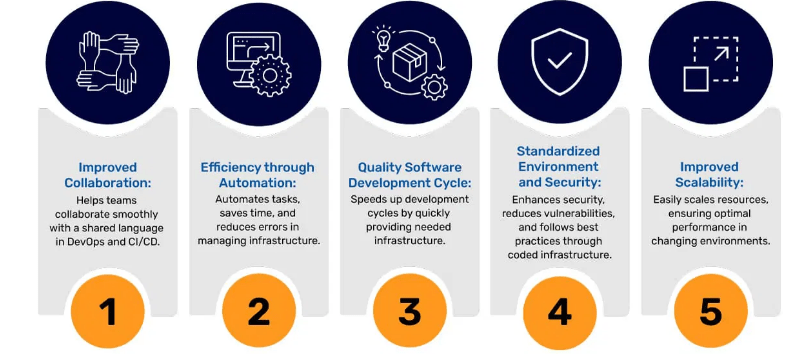
Tools for Implementing Continuous Delivery
Several powerful tools are available to support the implementation of Continuous Delivery (CD) practices, each offering unique features to streamline software delivery. One of the most widely used tools is Jenkins, an open-source automation server known for its flexibility and extensive plugin ecosystem. Jenkins enables teams to automate the building, testing, and deployment of applications, making it a reliable choice for setting up Continuous Integration and Continuous Delivery pipelines across a variety of environments and programming languages. Another popular option is GitLab, a web-based Git repository manager that offers an all-in-one DevOps platform. GitLab provides built-in support for source code management, CI/CD pipelines, monitoring, and more. With its native Continuous Delivery capabilities, teams can automate their entire software delivery process from code commits to production deployments without relying on external tools. Azure DevOps, developed by Microsoft, is a comprehensive suite of development tools that supports the full DevOps lifecycle. It includes version control, build automation, release pipelines, testing tools, and seamless integration with Microsoft Azure cloud services. Azure DevOps is especially well-suited for organizations working within Microsoft ecosystems, providing a unified and scalable solution for managing Continuous Delivery workflows efficiently and securely.
Challenges in Implementing Continuous Delivery
Are You Considering Pursuing a Master’s Degree in DevOps? Enroll in the DevOps Masters Course Today!
Role of Automation in Continuous Delivery
Automation is a fundamental component of Continuous Delivery (CD), significantly enhancing the speed, reliability, and consistency of software development and deployment processes. By eliminating manual interventions, automation reduces the risk of human error and ensures that tasks are executed in a standardized, repeatable manner. This not only improves accuracy but also saves valuable time, allowing development teams to focus on innovation rather than routine tasks. Automation in Continuous Delivery covers a wide range of activities, including code integration, automated testing, deployment, and monitoring. Once code is committed, automated pipelines can automatically build the application, run unit and integration tests, and validate changes before they are deployed. These processes help detect issues early, improving overall software quality. Automated deployments ensure that applications are delivered consistently across different environments development, testing, staging, and production without manual configuration. Monitoring tools further automate the tracking of performance and system health, enabling rapid response to issues an essential aspect often integrated with the Top Features of Docker. The more automation is embedded into the delivery pipeline, the more efficient, scalable, and resilient the software delivery process becomes, making it a vital practice for modern DevOps teams aiming for faster and more dependable releases.
Best Practices for Continuous Delivery
Security Considerations in Continuous Delivery
Preparing for a DevOps Job Interview? Check Out Our Blog on DevOps Interview Questions & Answer
Case Studies of Continuous Delivery Implementation
Several leading companies have successfully adopted Continuous Delivery (CD) to enhance their software delivery processes, enabling them to deploy features and updates faster and more reliably. Notable examples include Amazon, Netflix, and Spotify, all of which have integrated CD practices into their development workflows to maintain agility and responsiveness in a fast-paced digital environment. Amazon deploys code to production thousands of times per day, leveraging automation and robust testing to ensure each release is stable and meets customer expectations. This rapid deployment capability allows Amazon to innovate quickly while maintaining high-quality standards. Netflix, known for its streaming platform, uses Continuous Delivery to roll out updates frequently across its global infrastructure. Automation, rigorous testing, and real-time monitoring help ensure that new features are delivered seamlessly without disrupting user experience. Spotify also relies on CD to support frequent releases across its music platform. By fostering collaboration between development and operations teams and emphasizing continuous testing, Spotify delivers new features at scale while maintaining reliability an approach often highlighted in DevOps Training. These companies demonstrate how Continuous Delivery can transform software delivery into a streamlined, high-performing, and customer-focused process.
Conclusion
Continuous Delivery (CD) has significantly transformed the landscape of software development by streamlining the way software is built, tested, and deployed. By focusing on automation, frequent releases, and collaboration between development and operations teams, CD allows organizations to deliver software more rapidly and with improved quality and reliability. This approach reduces the risk associated with deployments and ensures that new features and fixes reach users faster. However, implementing a successful CD pipeline is not without challenges. Organizations must overcome cultural barriers, manage complex toolchains, and often modernize or integrate with legacy systems to achieve seamless delivery workflows. Despite these hurdles, the future of Continuous Delivery is promising. With ongoing advancements in automation, machine learning, and cloud-native technologies, CD is becoming even more powerful and accessible. As the software industry continues to evolve, companies that adopt Continuous Delivery will be better positioned to stay competitive, respond quickly to user needs, and deliver consistent value in an increasingly fast-paced digital world.


